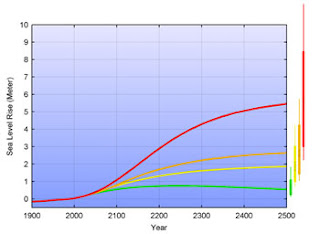We could use some rain.

Thursday's significant temperature records:
From the Weather Underground - Jeff Masters
The Amazing June Heat Wave of 2012
One of the most intense heat waves in U.S. history has enveloped portions of the western plains and Midwest and has now spread eastward. All-time heat records have fallen at a number of significant weather stations. And it is still just June. Is this a prelude for the coming summer or just a flash in the pan?
June had been a warm but not excessively so month until around June 20-23rd when an upper level high pressure dome that had been centered over the Baja of Mexico began to move/expand northeastward and strengthen dramatically. Between June 23 and June 27 this dome remained nearly stationary over the southern plains and maintained its strength.
The water vapor image for 3Z on June 23 shows a deep trough over the Pacific Ocean west of California amplifying the high pressure ridge over the southwest and southern plains. Image from UNYSYS GOES West satellite.
he air aloft became so abnormally warm that the NWS office in Dodge City focused on how intense the air aloft was in their daily discussions. At the 850 millibar level (about 5000’) the temperature was averaging an amazing 30°C (86°F) at the 5 a.m. (12Z) observation times on June 23-27!
The heat at surface level reached its greatest extent on June 26th, although the period of all-time records broken ranged from June 23 to June 27.
Here is a surface temperature map for 5p.m CST time on June 26:
Could this be the Beginning of Another ‘Summer of 1936'?
The only previous June heat waves in U.S. history that compare to the current one were those of 1934, 1936, and 1954. The summer of 1934 went on to be the warmest on record for the U.S. (74.6° June-August average) and July 1936 the single hottest month on record (77.4° average).
Ominously, some of the June records that have so far been set this month have eclipsed those of June 1934 and 1936 (1954 turned out be a summer of only slightly above long-term average normal temperature).
From the Weather Underground blog - by Christopher C. Burt


